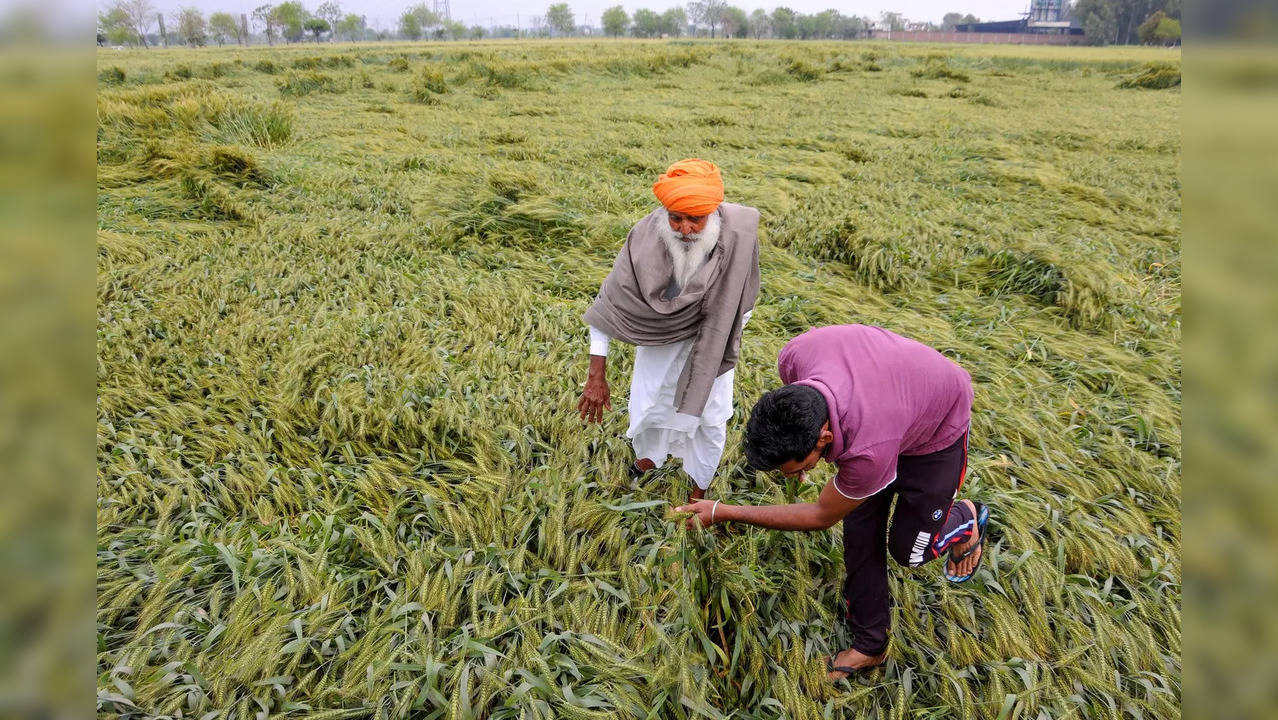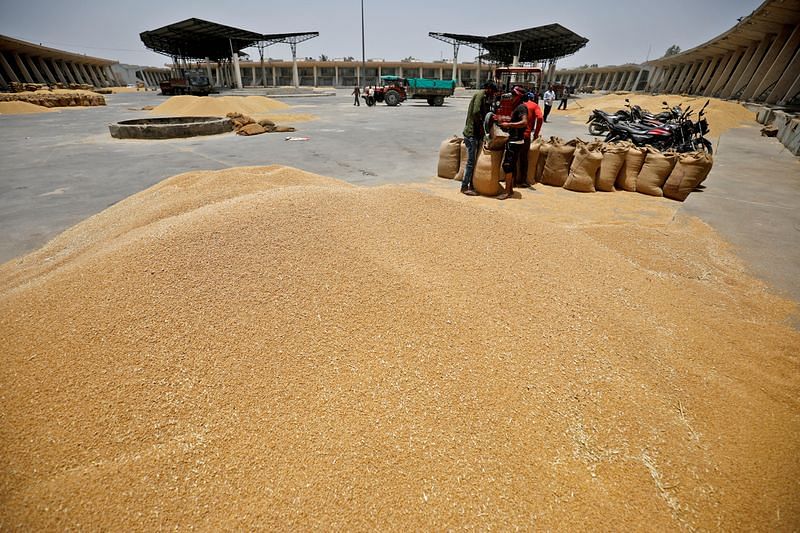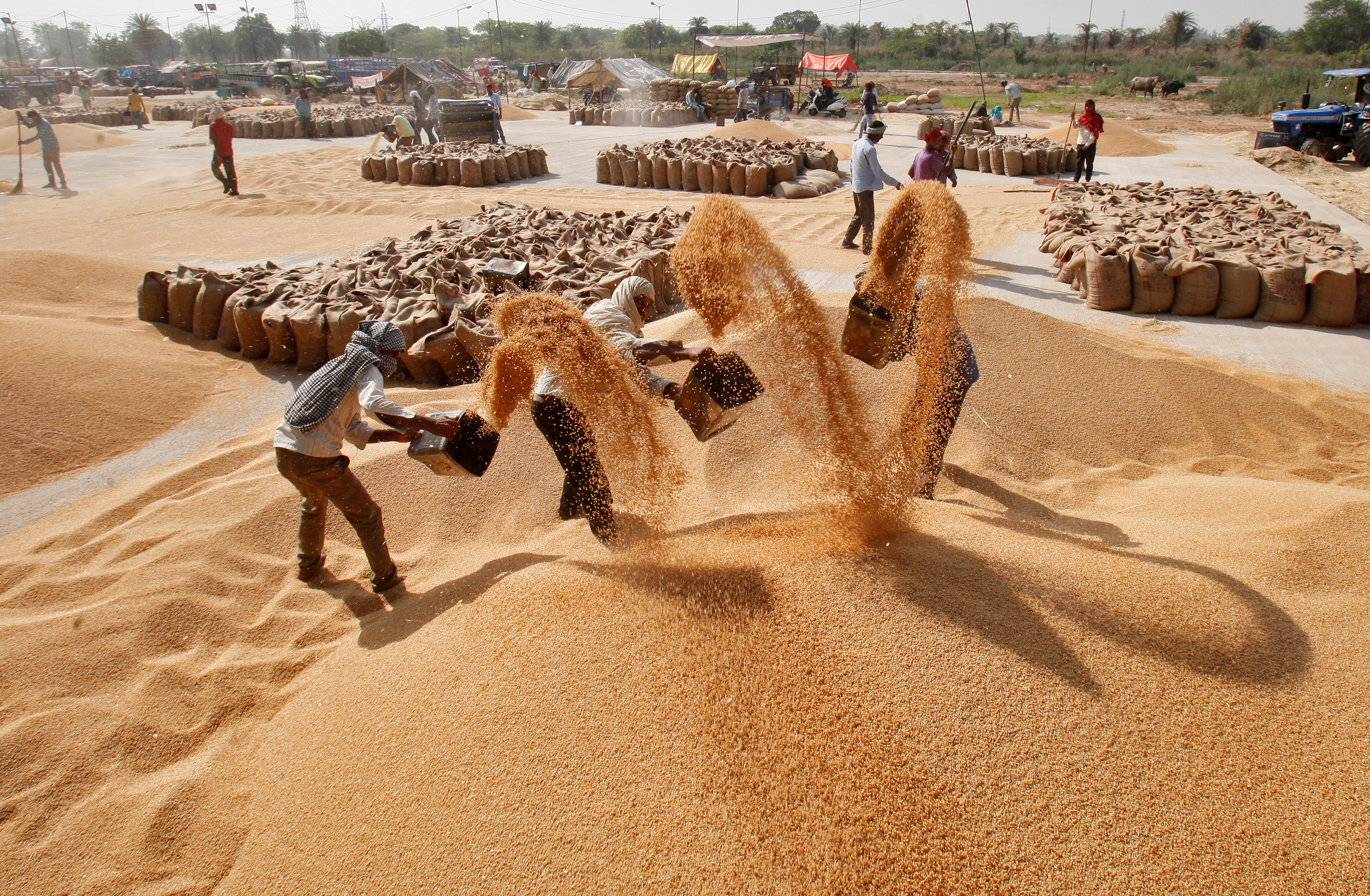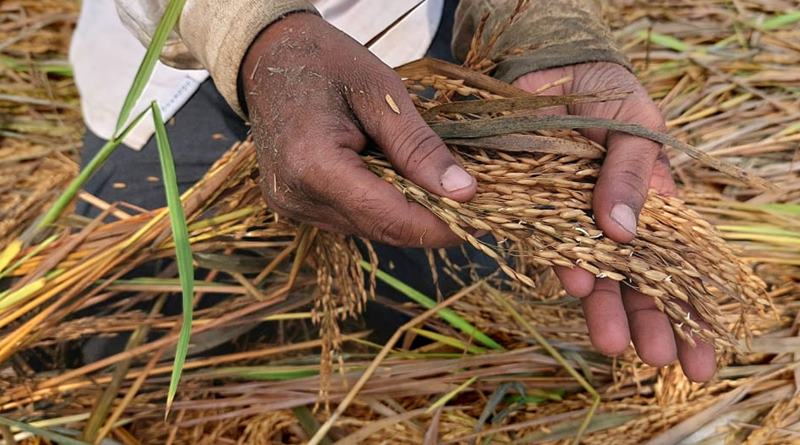Unseasonal Rain And Escalating Heatwaves Damage Crops And Put Farmers In A Difficult Situation
When the rainfall began early this month, February in India had already broken records for temperature for the whole century. The wheat crop was severely damaged by that.

The continuous unseasonal rain over the north and west of India has come as a blight that has destroyed crops and disturbed the harvest season, even though Indian farmers look forward to rainfall every year. Amid unusual weather rain, downpours, and strong winds, the harvest of essentials like wheat and mustard and the summertime treat mango stands disturbed. Also, an unseasonably high temperature that came right before an unseasonal downpour has added to the hardships already experienced by the wheat crop.
When the rainfall began early this month, February in India had already broken records for temperature for the whole century. That severely damaged the wheat crop. According to India Meteorological Department, there won’t be any relief for at least the next two weeks (IMD). Wheat crops on more than 5.23 lakh hectares in three states have been affected by untimely rainfall, hailstorms, and strong winds, raising concerns about significant production losses for farmers and difficulties with harvesting.
A substantial portion of the world’s population relies on wheat, which is one of the major crops produced in India. The crop damage situation also takes place against a backdrop of persistently rising inflation and global food security issues amid geopolitical uncertainty. Officials believe that the unfavorable weather has harmed 5.23 lakh hectares of wheat crops in the states of Madhya Pradesh, Rajasthan, and Uttar Pradesh. In Punjab and Haryana, the damage to the wheat crop is being assessed, they claimed.
The current crop year (July–June) 2022–23 is expected to produce a record 112.2 million tonnes of wheat, according to the officials. Manoj Ahuja, the Union Agriculture Secretary, told PTI that the government will examine the level of damage to wheat and other rabi crops on Monday together with state governments as a consequence of the most recent unseasonably early rains that have been received over the past two to three days.

A significant rabi (winter) crop is wheat. The crops were almost prepared to be harvested when the rains arrived. The government’s purchase at the minimum support value has been implemented in various Madhya Pradesh areas. Frequent widespread rainfall/thunderstorm, lightning, and gusty winds are expected over the [Northwest] region between March 30 and April 1, according to the IMD prediction.
A single thunderstorm occurred on March 30 and 31 over Uttarakhand, Himachal Pradesh, Haryana, Punjab, Chandigarh, Delhi, and East Rajasthan. On March 30, it occurred over West Rajasthan, and on March 31, it occurred over Uttar Pradesh. A few isolated areas in Ladakh, Gilgit-Baltistan, Jammu, and Kashmir, & Himachal Pradesh, Muzaffarabad, and Uttarakhand had severe rain on March 31.
The second week of March is predicted to bring isolated to dispersed rainfall with thunderstorms to the Western Himalayan region, according to the IMD prediction. The rains and associated wind gusts and storms cause farmers to suffer as they watch their investments and dreams fade in these crucial days for harvesting wheat and mangoes.
Early summer rains, a double whammy
Even though April, the month that normally ushers in the summer season, hasn’t even arrived yet, temperatures have already begun shattering records this year. While February was the warmest on record since 1901, March was characterized by heavy downpours, hailstorms, and strong winds. Even if brief periods of heavy rain are not a big problem, West and North India’s crops have been harmed by persistent rain and strong winds. Following unseasonably warm temperatures, these showers occurred. Wheat suffers significant damage from the mixture.
Wheat and mangoes are the main crops impacted by unseasonal rainfall in Bulandshahr and adjoining districts of Western Uttar Pradesh, with mango output in some areas suffering up to 80% damage, according to Manmohan Sharma, a farmer. Decay is likely to start once the crops are flattened. This year’s early high temperatures also had an impact on the flattened wheat. Before harvest, high temperatures cause wheat grains to become lighter and inferior, which customers do not want to purchase. As a result, this year both the quality and quantity have been impacted.

Sharma said that mangoes, which are frequently produced in the area, are also impacted: “Just like severe winds have flattened the wheat crop, the mangoes’ buds that would have flowered into fruit have also been harmed. In some locations, smaller mangoes have fallen before reaching full size. We also observed earlier illness onset”. Sharma, a farmer for even more than 20 years, claims that such unusual rains have been more regular recently. “Climate change is what this is. If not for climate change, what is this? Such weather would not have been present earlier, claims Sharma.
According to Satyam Pandey, a social worker from Bihar’s Rohtas district who is currently employed in Rajasthan, unusual weather rainfall like the one that is currently occurring has grown in recent years. The wheat plant collapses to the ground when it rains, making it difficult to cut manually. Machines cannot be utilized on loose and damp soil in places where harvesting machines are used, including Uttar Pradesh and Punjab. Thus harvesting was also put off.
According to Pandey, in addition to wheat and mustard, products like cucumbers and pumpkin are also impacted by the current unseasonal weather. The crop is laying exposed in the field while the farmers wait for the field to dry out so that it can be harvested, and if a thunderstorm hits the area as it has in recent days, more damage results, according to Pandey.
Increased heat waves and potential sickness Experts
According to Kamal Khilari, professor and head of the plant pathology department at the SVPUAT, Meerut, although extreme weather has a direct impact on plant disease, it’s doubtful that the sickness will spread right now due to the weather.
He writes, “Powdery mildew illness in mangoes was not observed, despite the conditions being unfavorable for the illness earlier in the season. But, if the current climatic conditions had existed earlier, the disease would have already taken hold. High winds will now cause harm to mangoes by causing young mangoes to fall without maturing. Several mango produce items will be harmed by this.”

In a similar vein, Khilari asserts that harm to wheat will come either from falling or from excessively hot weather, but not from disease, adding that too hot weather would cause the wheat grain to be squeezed. According to Khilari, the tomato crop may be impacted later if the current weather conditions persist.
According to him, the tomato crop may become infected with blight if the current weather pattern persists. If the current circumstances and moisture persist, such an event might occur. According to Rajesh Kumar Mall, Banaras Hindu University, the frequency of extreme weather events has increased over the past 50 years and is predicted to continue to rise over the following 50 years (BHU).
According to research, the frequency of heat waves has grown over the past 50 years. In the ensuing 50 years, it is anticipated that they will rise much more. Additionally, over the past 20 years, new regions have begun to experience heatwaves, including Andhra Pradesh, Telangana, and Odisha, which previously had none. These places have become a new hotspots for heatwaves.
Rain damages crops physically, but excessive heat in February and March interferes with wheat’s ability to fill its grains, according to Mall, who adds that this could impair up to 10% of the harvest as a whole. Mall adds that there hasn’t been a uniform change in temperature.
According to him, both the maximum and minimum temperatures have increased, but the minimum temperatures that are experienced at night have increased more quickly than the maximum temperatures. In a similar vein, winter temperatures have risen quicker than summer ones. The wheat crop is harmed by January’s extreme winter temperatures. While there is little you can do to protect crops from hailstorms, according to Mall, kinds are being developed that are resistant to too much water or too much heat that may be a solution.

Mall responds that there won’t be much of an impact on the nation’s food security because meteorological conditions only have a small regional impact. According to him, India has 15 agroclimatic zones. Sub-zones also exist. Due to the minimal impact of unusually heavy rain or even droughts, which only affect certain of these areas, overall food security is unaffected. Farmers on the ground, however, are still pessimistic, especially in areas that experience extreme weather.
The government creates policies, but according to a farmer from Western Uttar Pradesh who did not want to be named since he works for the government on a contract basis, either they come too late or are too complicated for smaller farmers to understand. As per Rohtas’ Pandey, “the loss of a farmer’s harvest is akin to the death of a child. Crop loss is like a farmer losing a child, he claims. The crop is planted and fed just like a young infant.
Similar hopes exist, such as the crop supporting the farmer just like a kid would support their elderly parents. Thus, crop failures are as devastating to farmers as a child’s passing. What do you do about that?” By the time government policies take effect, the small-scale farmer has already sold the produce at a loss because they urgently require cash to pay expenses and be ready for the subsequent cycle. The government must develop timely policies so that small-scale farmers, as well as larger farmers with the money and ability to hold onto their harvests until laws are developed, can profit.




